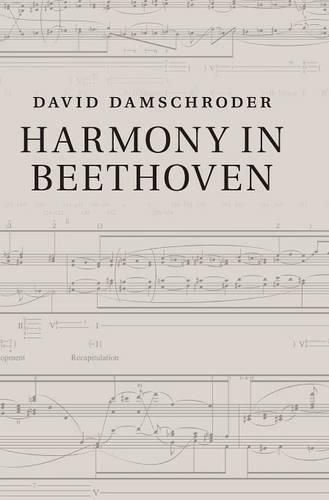Readings Newsletter
Become a Readings Member to make your shopping experience even easier.
Sign in or sign up for free!
You’re not far away from qualifying for FREE standard shipping within Australia
You’ve qualified for FREE standard shipping within Australia
The cart is loading…






David Damschroder’s ongoing reformulation of harmonic theory continues with a dynamic exploration of how Beethoven molded and arranged chords to convey bold conceptions. This book’s introductory chapters are organized in the manner of a nineteenth-century Harmonielehre, with individual considerations of the tonal system’s key features illustrated by easy-to-comprehend block-chord examples derived from Beethoven’s piano sonatas. In the masterworks section that follows, Damschroder presents detailed analyses of movements from the symphonies, piano and violin sonatas, and string quartets, and compares his outcomes with those of other analysts, including William E. Caplin, Robert Gauldin, Nicholas Marston, William J. Mitchell, Frank Samarotto, and Janet Schmalfeldt. Expanding upon analytical practices from the eighteenth and nineteenth centuries, and strongly influenced by Schenkerian principles, this fresh perspective offers a stark contrast to conventional harmonic analysis - both in terms of how Roman numerals are deployed and how musical processes are described in words.
$9.00 standard shipping within Australia
FREE standard shipping within Australia for orders over $100.00
Express & International shipping calculated at checkout
David Damschroder’s ongoing reformulation of harmonic theory continues with a dynamic exploration of how Beethoven molded and arranged chords to convey bold conceptions. This book’s introductory chapters are organized in the manner of a nineteenth-century Harmonielehre, with individual considerations of the tonal system’s key features illustrated by easy-to-comprehend block-chord examples derived from Beethoven’s piano sonatas. In the masterworks section that follows, Damschroder presents detailed analyses of movements from the symphonies, piano and violin sonatas, and string quartets, and compares his outcomes with those of other analysts, including William E. Caplin, Robert Gauldin, Nicholas Marston, William J. Mitchell, Frank Samarotto, and Janet Schmalfeldt. Expanding upon analytical practices from the eighteenth and nineteenth centuries, and strongly influenced by Schenkerian principles, this fresh perspective offers a stark contrast to conventional harmonic analysis - both in terms of how Roman numerals are deployed and how musical processes are described in words.